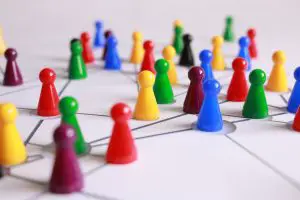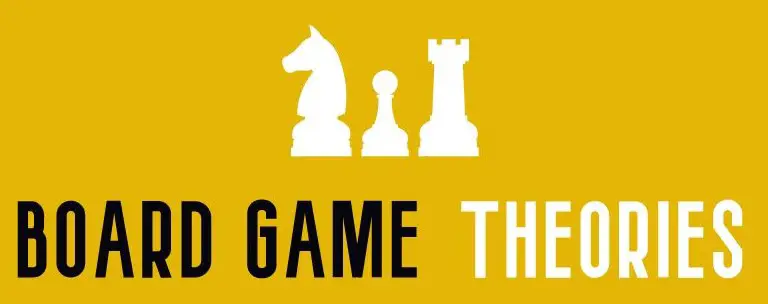You may have heard that board games are making a come back. This is true, and in fact board games are now more popular than ever before. In this article we explain why board game popularity currently surges.
 In this article we give supply reasons and demand reasons for why board games are becoming increasingly popular.
In this article we give supply reasons and demand reasons for why board games are becoming increasingly popular.
It’s important to understand that supply reasons and demand reasons are always intertwined.
If supply increases for a product, in particular in terms of variety and quality of that product, this often leads to higher demand. After all, if a product becomes better or there’s more variations of that product, then there’s a higher chance that someone will be interested in one of those variations.
Similarly, if demand rises for a product, this often prompts an increase in supply as well. Because, if there’s more people looking to buy a product, manufacturers are willing to get creative to produce more variations of that product to sell. And they’re also more willing to raise the quality of their products to trump their competitors, now that the potential market for this product has become bigger.
Both supply changes and demand changes have played a crucial role in the sudden meteoric rise of board game popularity. Therefore, we discuss the most important supply side and demand side changes, that have lead board games to become more popular.
1. Board Games Became More Varied (Supply Reason)
 You can probably count most board games you played in your childhood on two hands: Monopoly, Risk, Carcassonne, Clue, Stratego, Chess, Checkers, Scrabble, and if you’re younger perhaps Settlers of Catan.
You can probably count most board games you played in your childhood on two hands: Monopoly, Risk, Carcassonne, Clue, Stratego, Chess, Checkers, Scrabble, and if you’re younger perhaps Settlers of Catan.
Nowadays there’s many more board games and they’re much more varied as well.
2008: The Board Game Golden Year
Just take a look at three modern day classics, all released in 2008.
Pandemic was the first cooperative board game, in which you played together, rather than against each other. If you wanted to play together, you couldn’t do that before 2008.
Werewolves was the first game where you had a secret identity, either you were a villager or a werewolf, and you had to find out who everyone was and also not raise suspicions so you wouldn’t get killed. That’s nothing like Risk and Monopoly! That’s a completely different kind of board game, that you couldn’t play before 2008.
And the Dominion, the first deck building game, in which you make your deck while you play. This concept is so unlike the classic board games that first time players always get confused about its rules. But still, it became one of the most popular board games of all time, and it didn’t exist before 2008.
An Abundance Of Board Games
 Pandemic, Werewolves, and Dominion are just a few examples of games that went on to define an entire board game genre (respectively, cooperative board games, social deduction games and deck building games). Each of these genres now contain a plethora of different games.
Pandemic, Werewolves, and Dominion are just a few examples of games that went on to define an entire board game genre (respectively, cooperative board games, social deduction games and deck building games). Each of these genres now contain a plethora of different games.
And that’s not even speaking to the more recent kinds of board games that have been invented. Some of them have already defined a new genre, such as the escape room games. Others are very promising, such as Scythe, Terraforming Mars, Azul, Patchwork and others.
And lately there’s been an impressive amount of innovation in the shorter, lighter style games that can loosely be defined as party games. These are particularly important, because they’re popular among people that don’t normally get into the heavier, more classical board games.
And on top of that, there’s the ever expanding list of expansions (no pun intended). Right now there are 7 Catan expansions and extensions, 12 Dominion expansions, 10 Carcassonne expansions, and 9 Pandemic expansions and versions. And new games get expansions quicker than ever before.
Conclusion: Variety Breeds Demand
Because there’s so many more type of board games than there used to be, it’s only logical that ‘board games’ as a whole appeal to a much broader audience.
But it isn’t just that there’s more board games now – they’re also better.
2. Board Games Became Much Better (Supply Reason)
 Classics will always be classics – but the classic board games sure had a lot of problems, didn’t they?
Classics will always be classics – but the classic board games sure had a lot of problems, didn’t they?
Monopoly had like no strategy, and if you were clearly losing it still took at least an hour before you were actually knocked out. (Did you ever even finish a game of Monopoly?)
Risk sometimes became an unbreakable stalemate. And when I say sometimes, I mean every time *sighs*.
Catan was much better, but it still took a while, and luck played a pretty major factor.
All in all, the classic board games had four major problems, that were wolves by the new generation of board games. Let me tell you about them.
Too Confrontational
 Competition is a part of most board games and this is often what makes them fun. However, modern board games go about this is a more subtle, less in your face manner, that’s typically more enjoyable.
Competition is a part of most board games and this is often what makes them fun. However, modern board games go about this is a more subtle, less in your face manner, that’s typically more enjoyable.
In RIsk you conquer someone, and in Monopoly you bankrupt someone. That’s very confrontational. In contrast, in TerraForming Mars, you both contribute to making Mars hospitable to human life, and you both build a beautiful Mars colony in the process. In the end someone still wins, but it isn’t quite the ‘your success is my failure’ kind of thing.
And that’s not even to speak of the cooperative games, in which players don’t compete at all. Instead, they try to jointly beat the game. For some people, this is much more enjoyable.
Too Much Luck
Modern board games don’t rely as much on luck anymore, or at least not as overtly. For example, you never see dices as the core mechanic of board games nowadays.
It’s important to realize that luck isn’t always bad, and it’s a fun part of many board games. But, the combination of the very confrontational style of competition of classic board games, and the fact that luck plays such a big role in whether you win or not, is particularly hard to swallow.
TLDP (Too Long, Didn't Play)
All the classic board games took at least an hour to play and probably more like two hours.
Of course, this isn’t inherently bad; sometimes you want to play for two hours. But, sometimes you don’t. And in the old days, that meant you were just not going to play a board game.
Nowadays, there’s many board games that take only 15 minutes to play.
Specific Player Counts
 Similarly to how there were no short board games, there also weren’t any board games that you could play with 2 people, or with 8 people. Most board games pretty much required you be a group of ideally 4 or 5, and otherwise 3 or 6 players.
Similarly to how there were no short board games, there also weren’t any board games that you could play with 2 people, or with 8 people. Most board games pretty much required you be a group of ideally 4 or 5, and otherwise 3 or 6 players.
(And don’t tell me you can play Risk or Monopoly with 2 players. I know you did that, and I know I did that, but we both know that it wasn’t a fun experience.)
Of course, sometimes you’re not with 4 or 5 players. So what do you do in the old days? That’s right, you don’t play a board game.
Today there’s board games for all group sizes. So this is just a strict improvement compared to how it used to be for the board game industry.
Player Elimination
 You know what’s not fun? Being eliminated in a board game, and then waiting for possibly hours until you can play again.
You know what’s not fun? Being eliminated in a board game, and then waiting for possibly hours until you can play again.
I feel like everyone intuitively gets that. So why was player elimination a part of most board games?
Even in some of the games in which you can’t be eliminated, this problem still lurks. For example, in Catan, you regularly fall so far behind that you can’t possible win anymore. At that point, you might be wishing you could get eliminated, so you could just get on with your life.
Most modern board games don’t have player elimination and they make sure people don’t fall too far behind until the end (the fact that modern board games tend to be shorter helps with this).
I think this is the most important technical innovation in board games, because board games are always supposed to be a shared activity, in which in game losses don’t have real life consequences (such as being secluded from the game).
Conclusion: Better Games, More Demand
In conclusion we can say that board games got objectively better on some measures, and this naturally lead to an increase in their demand.
Of course, supply and demand are two way streets: board game producers also partly stepped up their games because demand already increased which lead to more competition. So now, let us turn to the demand side of this equation: why did people suddenly want to play more board games?
3. We Are Richer Than Ever Before (Demand Reason)
 The demand reasons for the increase in board game popularity are plentiful and I don’t think I can mention all of them in this article. But the major ones are readily apparent and easy to understand.
The demand reasons for the increase in board game popularity are plentiful and I don’t think I can mention all of them in this article. But the major ones are readily apparent and easy to understand.
The first reason is that we now simply have more money available to buy recreational products such as board games. This is true if we take ‘we’ to mean Americans, but even more so if we look at the global population.
So that’s that, countries are getting more prosperous and they’re moving up in Maslov’s pyramid from the bare necessities to the higher forms of entertainment.
4. We Have More Leisure Time (Demand Reason)
 This reason closely ties in with the last one – we don’t have to work as much anymore as we used to. This is largely due to the same technological and societal innovations that have made us more prosperous.
This reason closely ties in with the last one – we don’t have to work as much anymore as we used to. This is largely due to the same technological and societal innovations that have made us more prosperous.
Now that we have more free time available, we thus have more time to do things we like, such as playing board games. So increased leisure time is a clear driver of demand for entertainment producs such as board games.
5. Cultural Shift Against Technology (Demand Reason)
The final demand reason is that there’s increasing push back against technology in our daily lives. I’m talking about the fact that most people are looking at screens a lot more than they would ideally like to.
Board games are the perfect antidote to the technological dystopi we sometimes find ourselves in. Board games are off the grid, face to face, and they represent a return to the family values from before this technological revolution.
Conclusion - Why Board Games Are So Popular Right Now
To conclude let me just sum up what I argued in this article.
There are factors that drive an increased demand for board games, and factors that drive a more varied and better supply of board games. Together, these factors draw on each other and make each other stronger. Increased supply leads to increased demand, leads to increased supply, and so forth.
The main supply side reasons for the increased popularity of board games are that board games became for varied, and they became simply better. This leads more people to want to play them.
The main demand side reasons that board games are so popular right now, are threefold. We have more money to buy them, more time to play them, and we’re trying to move away from technology in our daily lives.
So those are the main reasons why board games are so popular right now.
As always, if you have a comment or a suggestions, let me know through our contact form, and I’ll do my best to answer your call.
